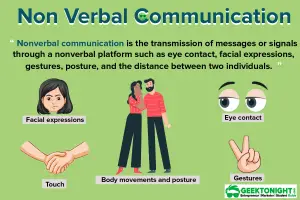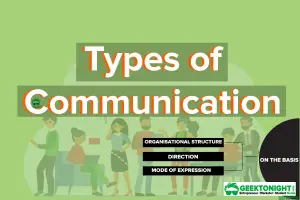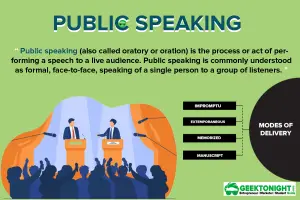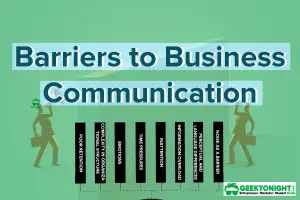What is Digital Communication?
Digital communication refers to communication done online through the use of the Internet. Digital communication includes e-mail, instant messaging, communicating through mobile phones, fax computers, video conferencing, etc. Digital communication entails all kinds of electronic-mediated communication in which individuals exchange messages with others, either individually or in groups.
Table of Content
With the paradigm shift in information technology, the world is becoming integrated and people from different corners of the world can remain in touch with each other. Nowadays, digital means of communication are extensively used by people and organisations. Digital communication has buried the boundaries and lessened the geographical distance between people.
The introduction of digital communication has enhanced and sped up communication with the help of electronic devices such as computers and mobile phones. Digital communication has facilitated organisations to connect swiftly to clients while saving time and money. Through the implementation of digital communication, organisations have witnessed a spike in productivity as well as
Website as Tool of Communication
In today’s scenario, online websites serve as platforms where most consumers look for buying or selling products or services. Websites have the potential to reach the masses as millions of people have access to the Internet. Nowadays, websites are predominantly used for disseminating information, online advertising, and conducting business online.
A website portrays the digital face of an organisation and is a cogent marketing tool. Customers can easily check the products and services offered by an organisation on its website, compare the prices and find where the product is available.
A well-maintained website can enable organisations to gain a competitive edge over competitors and boost the business image. From a business perspective, the website as a tool of communication offers hordes of benefits such as getting more leads, boosting sales, enhancing the professional image, improving customer service, turning prospective customers into regular customers, etc.
Websites are pivotal in increasing sales. Moreover, less time is spent explaining product or service details as generally, customers have already gained insight about them on the organisation’s website. A considerable online presence gives the impression that an organisation is credible, viable and successful as well.
Furthermore, websites help the sales team to swiftly respond to customers’ queries through chat process, provide assistance regarding product usage and provide real-time updates about the shipment of the ordered products.
Websites and online advertising are cost-effective methods of promoting a brand and offering a good return on investment. Websites help organisations to do away with brick and mortar stores and curtail operating costs (rent, wages, utilities).
Pay-per-click advertisements are widely visible on search engines and websites, allowing organisations to attract and reach potential customers. Through website traffic, organisations can analyse which products are browsed by the customers and what are their preferences.
Disadvantages Posed by Website
The disadvantages and challenges posed by a website are as follows:
Slow loading
Although websites are technical in nature, the speed at which the website loads is important. In case an organisation’s website takes a long time to load, it is quite likely that the online visitor will exit the site, which will be a disadvantage for the organisation.
Poor interface
A decent user interface design is of prime importance for having a website. If a probable customer finds the website too complex to navigate or confusing, then even the best service or product in the world would remain unsold. The website should be easy to access and navigate.
Security
Security is one of the basic aspects that is often overlooked by organisations while creating a website. If the website has poor security features, then customers are at risk of data piracy and cybercrime.
Social media platforms have brought a radical transformation in the social communication space. Irrespective of the age, people get immersed in the virtual world shaped by the Internet, share experiences and form relationships. Social media tools are user-friendly technologies that create an easy and immersive experience for users.
In addition, social media tools have emerged as popular journalistic tools having a great impact on the mainstream media’s news-making function. Social media tools are widely used by public for staying abreast of the latest happenings and uploading views and comments about products or services. Social media enables users to stay in contact, exchange updates and share valuable knowledge.
Some of the prominent social media platforms are:
It is one of the most popular social networking sites with a huge user base. It allows its users to connect with friends and share information, images, and videos. All a user requires is to register on the network by mentioning personal details and using a valid e-mail id.
By screening the profile of a Facebook user, organisations can get valuable information related to the user’s demography and psychological attributes. A fair amount of idea can also be obtained about the likes and dislikes of the user.
It is a social network created for working professionals. This platform is used by organisations to share industry-specific information, search for the right kind of talent, connect with ar- ea-specific experts, etc. LinkedIn allows users to connect with professionals of related fields and derive benefits from each other’s expertise.
It is used as a micro-blogging service. For this, a user has to create a twitter account also known as a handle. An organisation can use it to provide updates to its followers while keeping the message length under the prescribed limit of characters. It acts as an SMS service for the followers of the account.
YouTube
It is a video-sharing platform, which allows users to up-load, view and download videos, and give their views and opinions. Organisations use this platform to advertise and undertake brand promotions.
It is a social media platform which is used to send images, videos and messages with instant chats. It is a personal messaging application which has now been used widely for official communication because of its speedy communication.
When social media gained prominence, organisations adopted it to stay closer to customers in real-time. However, today, it has become such an indispensable tool that no organisation can afford to ignore it.
Some ways by which social media is used as a tool of communication are:
- Developing customer connections
- Increasing brand awareness
- Running campaigns
- Developing brand awareness
- Visualisation
- Near-constant access
- Source content
Developing customer connections
Instead of pushing products or services, organisations are focusing on being more connected to customers, aligning them to the organisation’s brand and engaging them with innovative content.
Increasing brand awareness
Social media platforms have become a natural place to target new and potential customers. About 60% of Instagram (a social networking application) users claim that they learn about new products on the platform.
Running campaigns
Social media has made it faster to market promotional campaigns and get instant responses from customers.
Developing brand awareness
Social media has become an effective tool to humanise/publicise a brand. This helps to establish customers’ trust and faith in the brand.
Visualisation
Organisations can connect with their customers on social media platforms to provide better visualisation of their products or services. This enables customers to make quicker decisions on whether to buy a product or service.
Near-constant access
Social media has empowered organisations to respond to customers 24×7 throughout the year. Moreover, customers rely on social media platforms for the swift redressal of their complaints.
Source content
Organisations can solicit content for new ideas directly from customers. They can also use social media tools to generate excitement about a new launch.
Though social media offers a host of benefits, there are certain limitations as well:
Dearth of emotional connect
Although social media allows people to interact with each other, but virtual connection cannot reciprocate the emotional feeling of face-to-face interaction. A person who is writing a text may not have the same feelings as expressed in words.
Isolation
Though social media offers seamless exchange of text or information round the clock, but it has made people more alienated and isolated from society. People are virtually connected but they tend to remain aloof even from their close acquaintances. Isolation makes people more vulnerable to psychological problems and even disturbs their mental balance.
Spews hatred
Nowadays, we have often seen that social media platforms are extensively used by inimical forces to create hatred or spread inflammatory messages. Since social media facilitates in reaching out to the masses, anti-social elements make use of such platforms to create a divide and disturb communal harmony.
Lowers productivity
Social media can be a time waster if not used with discretion. Constant beeps can be distracting and users can- not focus on the task at hand. Nowadays, most of the time, people stay active on social media which affected work productivity negatively.
Blogging as Tool of Communication
A blog is a website containing a series of entries on personal experiences, opinions and trending topics. The term blog is a short form of weblog. Blogs are written in the form of a diary or journal. The entries are presented in reverse chronological order, which are updated frequently. Blogs are like an online diary that people use to record their personal information and experience.
Blogs are one of the latest communication tools adopted by organisations. A blog is considered as a tool that connects customers to organisations in a better way. Through blogs, organisations can share timely and relevant information with their customers. This sharing of information is done on a regular basis. Blogs offer one-to-many types of communication. It increases the presence of an organisation on the Internet and helps in attracting search engine optimisers.
Through writing a blog, an organisation can showcase its expertise and achievements in a given area. Blogs have followers and such followers are assets for the organisation. Blogging is also considered a public relations activity that is virtually free of cost.
Blogging provides organisations with the opportunity to connect with existing and potential customers in a more conversational way. Blogging as a digital medium of communication provides space for digital content to broadcast facts and views.
Some blogs are intended for small groups while some for a larger audience. Since dissemination of information is a free-flowing process, blogs are getting more popular among audiences. A blog is also deemed as an agent of social change and development.
Classification of Blogs
Based on their purpose, blogs may be classified as follows:
- Personal blogs
- Business blogs
- Professional blogs
- Niche blogs
- Affiliate marketing blogs
- Travel blogs
- Food blogs
- Technology blogs
Personal blogs
These blogs are individual blogs created to share individual experiences, feelings and thoughts with the audience. Personal bloggers share knowledge or experience by creating content on their areas of interest such as politics, daily life, sports, hobbies, etc. in order to attract an audience having similar interests. For instance, personal blogs may contain poetry or artwork by an artist.
Business blogs
A business blog is an enterprise blog which can be a section of an existing business domain or a standalone website. It shares information and content related to a company’s industry and its sub-fields. The main aim is to generate traffic for the company’s website in order to generate leads and make the website grow. The agenda behind business blogs is that visitors will get attracted to informational content.
Professional blogs
These blogs are created to earn money on the merit of the content they contain. The main aim of creating professional blogs is to make money. A variety of monetisation strategies such as selling display ads or promoting other peoples’ products and services are used by professional bloggers to earn money.
Niche blogs
These blogs are created to focus on specific topics and promote discussions on the same; for example, gaming, gadgets and various useful tools. Niche bloggers create content out of passion or hobby and keep their blogs going even with low traffic. A niche bog can also be created for the purpose of starting a small business.
Affiliate marketing blogs
These blogs display the review of products or services availed by customers. These blogs are generally in the form of product reviews or tutorials. The blog contains an affiliate link as a call to action button for visitors to make a purchase. The bloggers earn commission on every call to action click or lead generation or purchase depending upon the monetisation strategy.
Travel blogs
These blogs are developed to post travel information to guide prospective tourists. Travel bloggers share their travelling experiences, memories and a travel guide to its readers. The visitors of such blogs gain information on how one can travel in a smart way and at a nominal cost.
Food blogs
These blogs are created to tell people about food recipes. The readers of such blogs are those who are interested in recipes, ingredients, healthy eating, fine dining and other food-related stories.
Technology blogs
These blogs are developed to circulate news about new technological developments and related business. For instance, popular technology blogs are TechCrunch, Gizmodo, etc. These blogs share information on new updates, tech tips, news or insights into new technological advancements.
Negative Aspects of Blogging
There are some negative aspects of blogging as well, which are explained as follows:
Time-consuming
People have a tendency to read blogs that are based on trending topics. Prior to creating a blog based on current topics, a blogger is required to do thorough research and background reading. This may take a considerable amount of time and effort. There is a high chance that despite devoting a considerable amount of time and effort, nothing constructive is yielded.
False information
A personal blog showcases the views and opinions of the blogger. At times, a blogger may misconstrue information or present the wrong information. People tend to accept what they read, so incorrect information may spread false rumours and cause damage.
Business Communication Notes
(Click on Topic to Read)
- What is Business Communication?
- What is Communication?
- Types of Communication
- 7 C of Communication
- Barriers To Business Communication
- Oral Communication
- Types Of Non Verbal Communication
- What is Written Communication?
- What are Soft Skills?
- Interpersonal vs Intrapersonal communication
- Barriers to Communication
- Importance of Communication Skills
- Listening in Communication
- Causes of Miscommunication
- What is Johari Window?
- What is Presentation?
- Communication Styles
- Channels of Communication
- Hofstede’s Dimensions of Cultural Differences and Benett’s Stages of Intercultural Sensitivity
- Organisational Communication
- Horizontal Communication
- Grapevine Communication
- Downward Communication
- Verbal Communication Skills
- Upward Communication
- Flow of Communication
- What is Emotional Intelligence?
- What is Public Speaking?
- Upward vs Downward Communication
- Internal vs External Communication
- What is Group Discussion?
- What is Interview?
- What is Negotiation?
- What is Digital Communication?
- What is Letter Writing?
- Resume and Covering Letter
- What is Report Writing?
- What is Business Meeting?
- What is Public Relations?
Business Communication Notes
(Click on Topic to Read)
- What is Business Communication?
- What is Communication?
- Types of Communication
- 7 C of Communication
- Barriers To Business Communication
- Oral Communication
- Types Of Non Verbal Communication
- What is Written Communication?
- What are Soft Skills?
- Interpersonal vs Intrapersonal communication
- Barriers to Communication
- Importance of Communication Skills
- Listening in Communication
- Causes of Miscommunication
- What is Johari Window?
- What is Presentation?
- Communication Styles
- Channels of Communication
- Hofstede’s Dimensions of Cultural Differences and Benett’s Stages of Intercultural Sensitivity
- Organisational Communication
- Horizontal Communication
- Grapevine Communication
- Downward Communication
- Verbal Communication Skills
- Upward Communication
- Flow of Communication
- What is Emotional Intelligence?
- What is Public Speaking?
- Upward vs Downward Communication
- Internal vs External Communication
- What is Group Discussion?
- What is Interview?
- What is Negotiation?
- What is Digital Communication?
- What is Letter Writing?
- Resume and Covering Letter
- What is Report Writing?
- What is Business Meeting?
- What is Public Relations?








